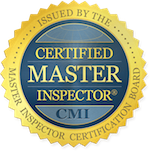Radon Information

A map of estimated radon levels in North Carolina. The darker the area, the higher the known concentration of radon.
Radon is a naturally occurring, invisible, odorless gas that comes from deposits of uranium in soil, rock, and water. It is harmlessly dispersed in outdoor air, but when trapped in buildings, can be harmful, especially at elevated levels. Radon is a radioactive decay product of radium, which is a decay product of uranium. Uranium and radium are both common elements in soil.
Most indoor radon enters homes from the soil or rock beneath it when Radon and other Sources of Radon in Homes gases rise through the soil and get trapped under the house. When warm air rises naturally inside the home, it creates a vacuum in the lower areas of the house. The natural reaction to this vacuum is air from beneath the structure containing radon is sucked up into the home through openings (cracks, doors, windows) on the lower levels. Radon gas enters the same way air and other soil gases enter the home; through cracks in the foundation floor or walls, hollow-block walls, and openings around floor drains, heating and cooling ductwork, pipes, and sump pumps. Once inside, the radon can become trapped and concentrated.
Outdoor air that is drawn into a building can also contribute to the indoor radon level. However, the average outdoor air level of radon is normally so low that it does not create a problem
Radon may also be dissolved in water, particularly well water. After coming from a faucet, about one ten thousandth of the radon in water is typically released into the air. The more radon there is in the water, the more it can contribute to the indoor radon level.
Trace amounts of uranium are sometimes incorporated into materials used in construction. These include, but are not limited to concrete, brick, granite, and drywall. Though these materials have the potential to produce radon, they are rarely the main cause of an elevated radon level in a building.
Radon has been found in elevated levels in many counties throughout North Carolina. However homes in the coastal plain of North Carolina usually have low radon levels, while the upper piedmont and mountain areas have the greatest proportion of homes with elevated levels of radon.
Radon is present in Raleigh, Durham, Cary, Chapel Hill, Apex, and the surrounding areas. Home Spectors discounts the cost of a radon test when you order a home inspection.
Click Here for more information on Radon.
Home Inspections in Wake County
Apex, Cary, Fuquay-Varina, Garner, Holly Springs, Knightdale, Morrisville, Raleigh, Rolesville, Wake Forest, Wendell, Zebulon, and the surrounding areas.
Home Inspections in Durham County
Durham and the surrounding areas.
Home Inspections in Orange County
Carrboro, Chapel Hill, Hillsborough, and surrounding areas.



